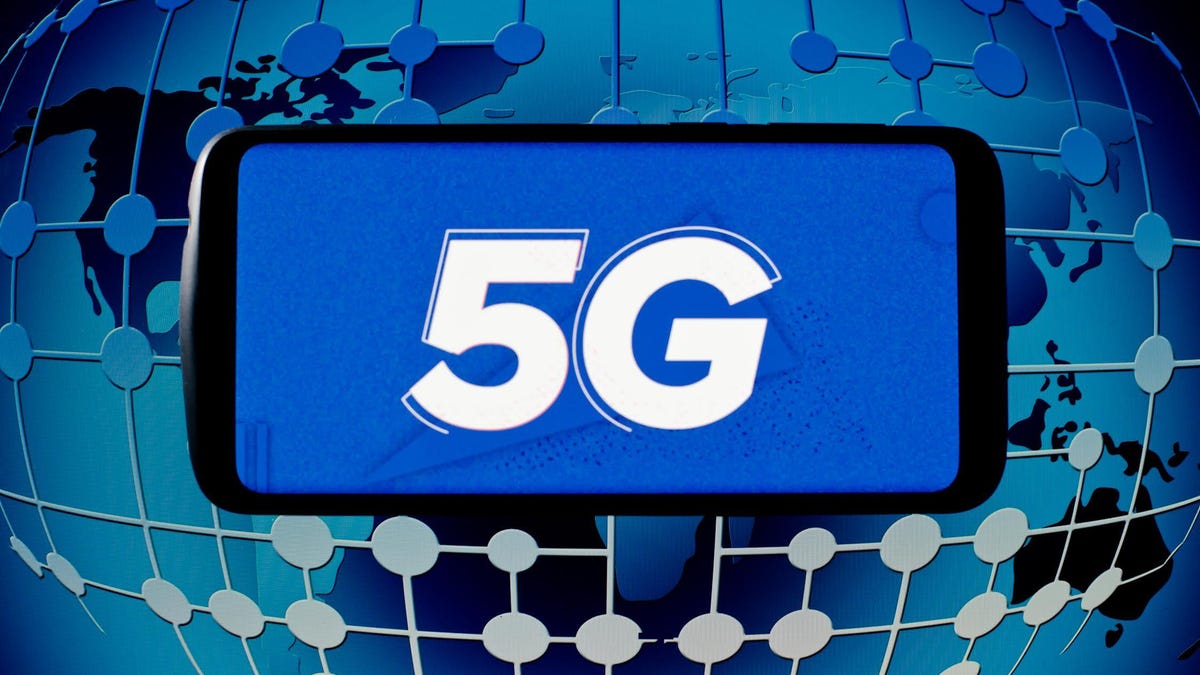COVID-19 isn't slowing down the 5G rollout -- at least not in China
A report by networking giant Ericsson finds things aren't quite as rosy in North America and Europe.

China has been rolling out 5G across the country.
The pandemic sure isn't hurting 5G subscriptions, at least when it comes to China. The super-fast new wireless technology should be in about double the number of hands in 2020 as Ericsson predicted late last year.
The Swedish networking giant, in its biannual mobility report released Tuesday, found that by the end of the year, there will be 190 million 5G subscriptions around the world. In November, it had predicted 100 million. China subscriptions should soar, while North America and Europe won't be quite as strong as the company previously projected.
"It's driven very much by China," Patrick Cerwall, head of strategic marketing insights at Ericsson, said in an interview with CNET ahead of the report's release. "China has continued to really drive hard the uptake of 5G in terms of rollout for the networks, having devices in shops and making sure that people are then upgrading with good packages."
By the end of 2025, the number of 5G users around the globe should soar to 30% of all mobile subscriptions at that time, or about 2.8 billion. That's up from the 2.6 billion forecasted in the previous report, Ericsson said.
5G is the new, super-fast wireless technology that's been rolling out across the world. It's live in many major cities in the US, as well as places in China, South Korea and the UK, among other countries. The technology is poised to change the way we live and is expected to power everything from self-driving cars to advanced augmented reality experiences. The belief is whatever country leads in 5G will lead the world over the coming decades and possibly longer.
Ericsson is one of the world's biggest provider of telecom equipment. Many of the wireless industry's new 5G networks are built on its technology, giving it insight into traffic and usage. It also surveys consumers in various countries to find out their opinions about topics like 5G.
2020 was supposed to be the year 5G went mainstream. But the spread of the novel coronavirus has caused doubts about how widely the technology will be used this year. The new coronavirus, which causes an illness called COVID-19, was first detected in the Chinese city of Wuhan late last year. Since that time, it's become a full-blown pandemic, infecting over 8 million people around the globe. The outbreak has caused cities and entire countries around the globe to issue lockdowns, shuttering stores, canceling events and forcing citizens to stay at home to help contain the coronavirus.
China's recovery
While China suffered from the coronavirus first, most areas of the country have now largely recovered. Citizens have been returning to work and heading to stores and restaurants. Increasingly, 5G is becoming one of the must-haves for Chinese shoppers.
The majority of 5G subscriptions this year will come from the Asian country, Cerwall said, as demand for the technology soars in the country. 5G subscriptions in the US and Europe will be lower than Ericsson predicted in November, he said. This year, 13 million people in North America should subscribe to 5G, down from Ericsson's previous forecast for 16 million. And in Europe, 4 million people will use 5G by the end of 2020, down from the earlier estimate for 6 million.
"If you look outside China, it's more logical [what's happening because of the pandemic]," Cerwall said. "The fact that you're sitting at home, don't go out and shop for a new device ... is one reason" subscriptions won't rise as much as anticipated. And in Europe, regulators delayed spectrum auctions, which will slow 5G's rollout in that region, he said.
Still, Ericsson expects the areas outside China to recover and be on pace with the company's earlier predications by the end of 2025. While the percentage of China's population using 5G will be higher initially, North America will catch up in a year or two, Cerwall said. At that point, about 20% of people in North America will subscribe to 5G services. By the end of 2025, about three out of every four mobile customers in North America will use 5G, Ericsson said.
5G "is going to be everywhere by 2025," Cerwall said. "All the regions of the world will have started to roll it out."
Ericsson also found that fixed wireless will grow over the next five years. The technology delivers a home internet connection via a wireless tower to a fixed outdoor antenna installed at a customer's home or business. By the end of 2025, about 25% of total mobile network data traffic will come from fixed wireless access, Ericsson predicted. Connections will be close to 160 million, the company said, and each connection typically covers three to four people (the typical number in a household). Today, there are 50 million fixed wireless connections in the world, Ericsson said.

